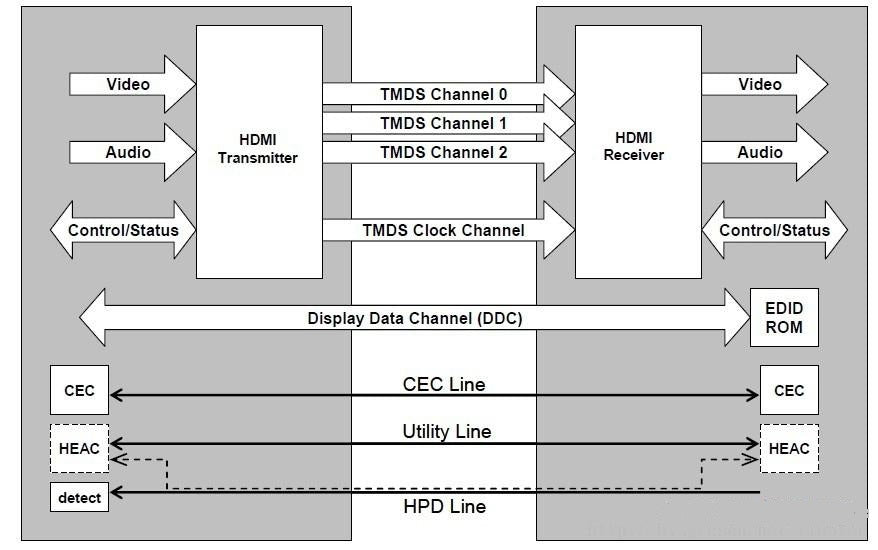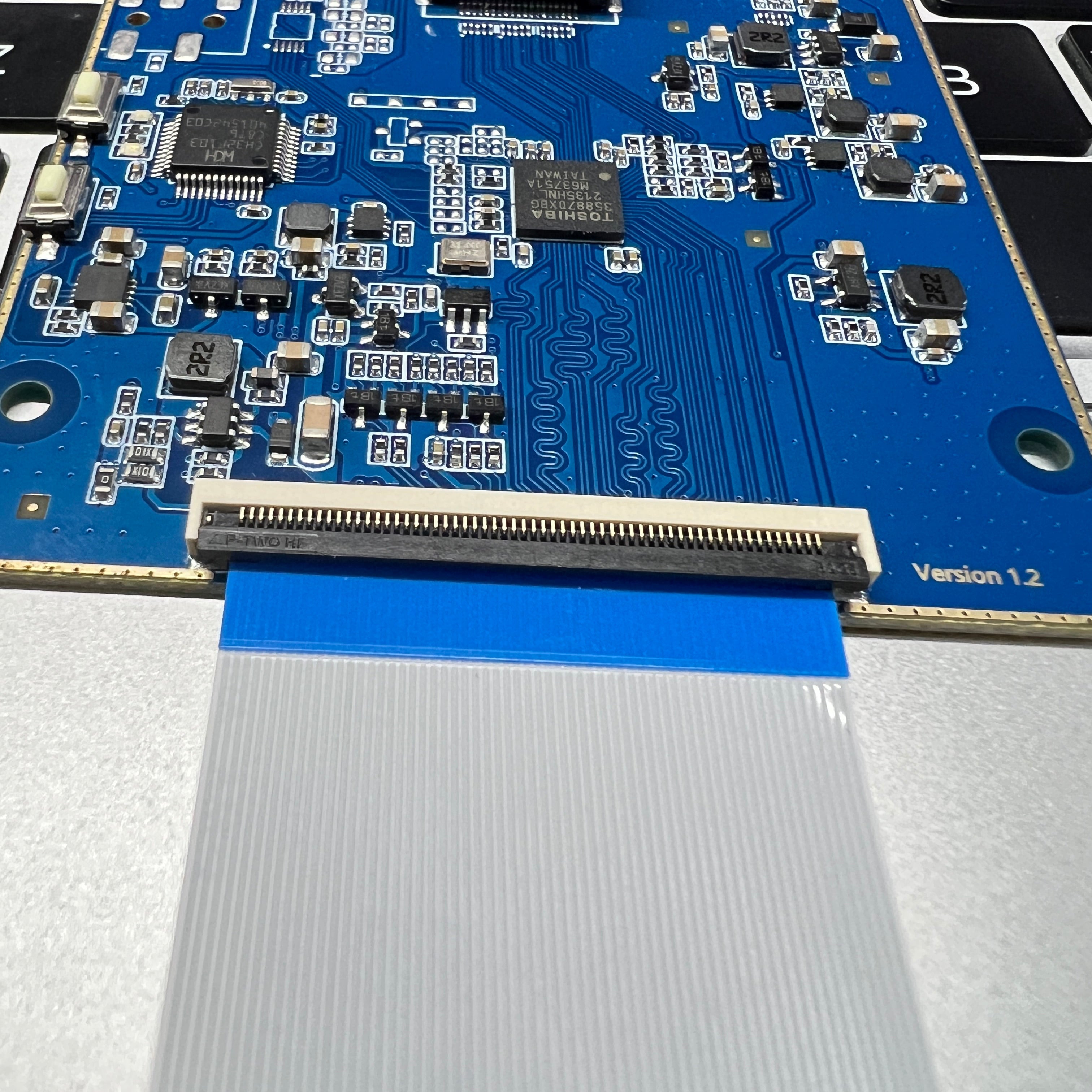HDMI interface is the most common interface of hardware equipment, including projector, TV, box, player and so on a variety of hardware devices, are necessary HDMI interface. The HDMI interface is one of the indispensable HD interfaces for HD transmission including 4K and even 10K.
HDMI 1.0
Supports Blu-ray and full HD 1080/60p
HDMI 1.0 was released in 2002, and was the first version of the HDMI specification. It supported a maximum resolution of 1080p, and had a maximum data rate of 4.9 Gbps. Despite being superseded by newer versions, HDMI 1.0 is still compatible with many modern devices.
HDMI 1.1
Added support for DVD Audio
HDMI 1.1 was released in 2004, and added support for DVD Audio. This allowed for the transmission of high-quality audio from DVD players to receivers. HDMI 1.1 also had a maximum data rate of 4.9 Gbps, and was compatible with HDMI 1.0 devices.
HDMI 1.2
Added support for One Bit Audio, used on Super Audio CDs
HDMI 1.2 was released in 2005, and added support for One Bit Audio, which is used on Super Audio CDs. It also added support for Consumer Electronic Control (CEC), which allowed HDMI devices to be controlled by a single remote control. HDMI 1.2 had a maximum data rate of 4.9 Gbps, and was backward-compatible with HDMI 1.0 and 1.1 devices.
HDMI 1.2a
Compatible with CEC multi-device control
HDMI 1.2a was released in 2005, and added support for automatic audio syncing, which made it easier to synchronize audio and video. It also added support for the HDMI Type A connector, which is the most common type of HDMI connector. HDMI 1.2a had a maximum data rate of 4.9 Gbps, and was backward-compatible with HDMI 1.0, 1.1, and 1.2 devices.
HDMI Type-A is the most common HDMI plug is in the 1.0 version has been used so far, Type C(mini HDMI) is 1.3 version launched, Type D(micro HDMI) is launched in the 1.4 version.
HDMI 1.3
Bandwidth increased to 10.2 Gbps,Added support for higher resolutions and color spaces
HDMI 1.3 was released in 2006, and introduced several new features. It supported higher resolutions, including 1440p and 1600p, and added support for the xvYCC color space. HDMI 1.3 also introduced support for Dolby TrueHD and DTS-HD Master Audio, which are high-definition audio formats. It had a maximum data rate of 10.2 Gbps, which allowed for the transmission of 1080p video at 120Hz.
HDMI 1.4
Added support for 3D, Ethernet, and Audio Return Channel (ARC)
HDMI 1.4 was released in 2009, and introduced several new features. It added support for 3D content, which allowed users to watch 3D movies and play 3D games. It also added support for Ethernet over HDMI, which allowed devices to share an internet connection. HDMI 1.4 also introduced the Audio Return Channel (ARC), which allowed audio to be sent from a TV to a receiver without the need for a separate audio cable. HDMI 1.4 had a maximum data rate of 10.2 Gbps, and was backward-compatible with earlier versions of HDMI.
HDMI 1.4a\1.4b
A minor revision to add 3D functionality
HDMI 1.4a was released in 2010, and added support for 3D video formats that use the frame-packing technique. It also added support for the HDMI Ethernet Channel (HEC), which allowed devices to share an internet connection. HDMI 1.4b was released in 2011, and added support for 3D video formats that use the side-by-side technique. It also added support for the Dual-View feature, which allowed two video streams to be transmitted simultaneously within the same video frame. Both versions had a maximum data rate of 10.2 Gbps, and were backward-compatible with earlier versions of HDMI.
HDMI 2.0
Increased bandwidth to 18 Gbps, Added support for 4K video at 60 Hz, Added support for up to 32 audio channels
HDMI 2.0 was released in 2013, and is currently the most common version of the HDMI specification. It supports a maximum resolution of 4K at 60 Hz, and has a maximum data rate of 18 Gbps. HDMI 2.0 also introduced support for up to 32 audio channels, and added support for the Rec. 2020 color space. It is backward-compatible with earlier versions of HDMI, but requires both the source and the display to support HDMI 2.0 in order to take advantage of its features.
HDMI 2.0a
Added support for High Dynamic Range (HDR), Added support for Hybrid Log-Gamma (HLG), Added support for static and dynamic metadata for HDR content.
HDMI 2.0a was released in 2015, and added support for High Dynamic Range (HDR), which allows for a wider range of colors and brightness. It also added support for Hybrid Log-Gamma (HLG), which is a format for HDR content. HDMI 2.0a introduced support for static and dynamic metadata for HDR content, which allows for more accurate color representation. It has a maximum data rate of 18 Gbps, and is backward-compatible with earlier versions of HDMI.
HDMI 2.1
Increased bandwidth to 48 Gbps, Added support for 8K video at 60 Hz and 4K video at 120 Hz, Added support for Dynamic HDR, Added support for eARC, Added support for Game Mode VRR, Added support for Quick Media Switching (QMS), Added support for Auto Low Latency Mode (ALLM), Added support for Variable Refresh Rate (VRR).
HDMI 2.1 was released in 2017, and is the latest version of the HDMI specification. It supports a maximum resolution of 8K at 60 Hz and 4K at 120 Hz, and has a maximum data rate of 48 Gbps. HDMI 2.1 also introduced support for Dynamic HDR, which allows for more accurate color representation, and eARC, which allows for high-quality audio formats such as Dolby Atmos to be transmitted over HDMI. It also added support for Game Mode VRR, which reduces lag and stuttering in games, and Quick Media Switching (QMS), which eliminates the delay that can occur when switching between different video sources. HDMI 2.1 also introduced Auto Low Latency Mode (ALLM), which automatically switches a display into low-latency mode when connected to a compatible gaming console or PC, and Variable Refresh Rate (VRR), which synchronizes the refresh rate of the display with the frame rate of the content being played for a smoother viewing experience.
Read more

Overview HDMI (High-Definition Multimedia Interface) is a standardized protocol for transmitting high-quality digital audio and video signals between devices. It was first introduced in 2002 and ha...

MIPI DSI, a serial interface by MIPI Alliance, connects SoCs to displays in smartphones/tablets. It uses 1-4 data lanes (1.5Gbps/lane), maxing at 6Gbps total, slashing pin count while transmitting ...



Leave a comment
This site is protected by hCaptcha and the hCaptcha Privacy Policy and Terms of Service apply.